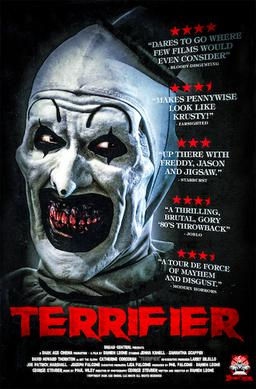The Haunted Palace (1963) review
- Jeremy Kelly
- Oct 11, 2024
- 4 min read
6. The Haunted Palace (1963)
Directed by: Roger Corman
Produced by: Roger Corman
Screenplay by: Charles Beaumont
Starring: Vincent Price, Debra Paget, Lon Chaney Jr.

Roger Corman is credited with directing eight movies based on the stories of Edgar Allen Poe; one of them is “The Haunted Palace,” but it’s kind of a misnomer, as only the title is taken from Poe’s six-stanza poem, while the plot is much closer to H.P. Lovecraft’s The Case of Charles Dexter Ward. It stars Vincent Price in one of many roles he played under Corman but also adds Lon Chaney Jr. in one of his later performances. The former plays Charles, who inherits a palace once owned by his great-great-grandfather Joseph Curwen; however, the palace comes with a curse, as his ancestor was a warlock now seeking revenge from beyond the grave. Despite weak characterizations and a story that runs out of steam, the gorgeous scenery and committed performances make it a fun one to check out.
The opening takes place in 1765 in the town of Arkham, Massachusetts, where the sinister Curwen has been conducting supernatural rituals on local unsuspecting women. The townspeople have had enough, dragging him out of his palace and burning him to death, but not before he curses the town, its inhabitants and their descendants. Cut to 110 years later, where Curwen’s look-alike successor Charles arrives with his wife Anne (Debra Paget); they’re treated with hostility, given his family history, except for Dr. Marinus Willet (Frank Maxwell), who nevertheless encourages them to leave town for their own safety, as the townspeople have long feared Curwen returning to enact his vengeance. Though initially not planning to stay, Charles is drawn to the portrait of his great-great-grandfather, to the point that Curwen starts possessing his body; he unites with fellow warlocks Simon (Chaney) and Jabez (Milton Parsons), also controlling their descendants, and look to resume their old black magic rituals.

I’ve talked about Price a lot over the years and what a brilliant character actor he was, but what helps make this role stand out is how he changes between this troubled soul Charles and the wicked Curwen. For the most part, it’s just vague enough how this curse actually works with Curwen possessing Charles that you just go along with it; only near the end does it start feeling cheap, but my point is that we get to see Price in a sad wistful state, and be a sneering bastard as well, and he plays both parts to a tee. Anne is of course the common victim in this circumstance, seeing her loving husband one minute and a cold-hearted monster the next; the scene where he approaches her in the bedroom to, in his words, “exercise his husbandly prerogative” is all sorts of uncomfortable. Debra Paget does a fine job as Anne, although I wish we could’ve seen her fight back a little more against Curwen’s needling; she more or less whimpers and sobs during these scenes when she seemed a little more proactive than that.
Despite their respective careers going all the way back to the Universal days, this is the only movie where Price and Chaney shared screen time; they were both in “Abbott and Costello Meet Frankenstein,” but the former just made a last-second unseen cameo as the Invisible Man. Simon was going to be played by Boris Karloff, who had been in Corman’s “The Raven” with Price, but Karloff was sick at the time. Chaney managed to escape typecasting from his many horror performances as The Wolf Man and Kharis the Mummy, appearing in plenty of mainstream supporting roles throughout the 1950s and ‘60s. Much more lined and gray-haired than his Larry Talbot days, Chaney is very believable in this role, even though the character doesn’t have much to him.

Much of the supporting cast is the same way; they play their parts well, but they don’t really do much aside from filling in the same archetypes we see in a “Frankenstein” film as the angry villagers who eventually go to arms with torches and pitch forks. The plot actually plays out sort of like “Son of Frankenstein,” with an old tormentor’s descendant inheriting their home and running afoul of the citizens; however, the story, while certainly moving along much differently, becomes a little complicated, juggling subplots like other descendants born with abnormalities, Curwen going after the descendants of those who killed him, them trying to resurrect his mistress Hester (Cathie Merchant), and other occult plans that sound like something out of a sci-fi flick from a decade earlier, and I don’t mean that in a good way. But the story thankfully lends itself to some stellar set pieces; the color scheme, angles and set designs all look quite beautiful.
Reportedly, it wasn’t Corman’s idea to give this movie a Poe title; that was a choice made by American International Pictures to cash in on the previous Poe films. It’s a shame that “The Haunted Palace” has that notoriety, because this was the first adaptation of a Lovecraft story, one that wasn’t even published in the author’s lifetime. In 1991, there was a more clearly defined adaptation called “The Resurrected” that went directly to video, but it’s mostly forgotten. Corman passed away earlier this year at the ripe old age of 98 and is credited with producing hundreds of movies in his lifetime, giving starts to future Hollywood big shots like Francis Ford Coppola, Martin Scorsese, Ron Howard, and the list goes on. So I could do these marathons for decades and never feel fully satisfied with covering his career. But this is an underrated one, in my opinion; aesthetically pleasing and enjoyably performed, give it a watch.
My rating: 7.5/10





Comments